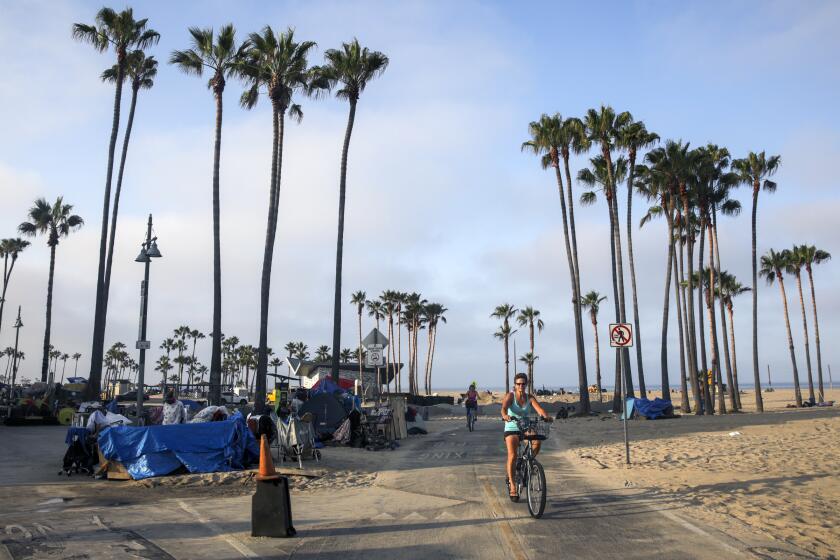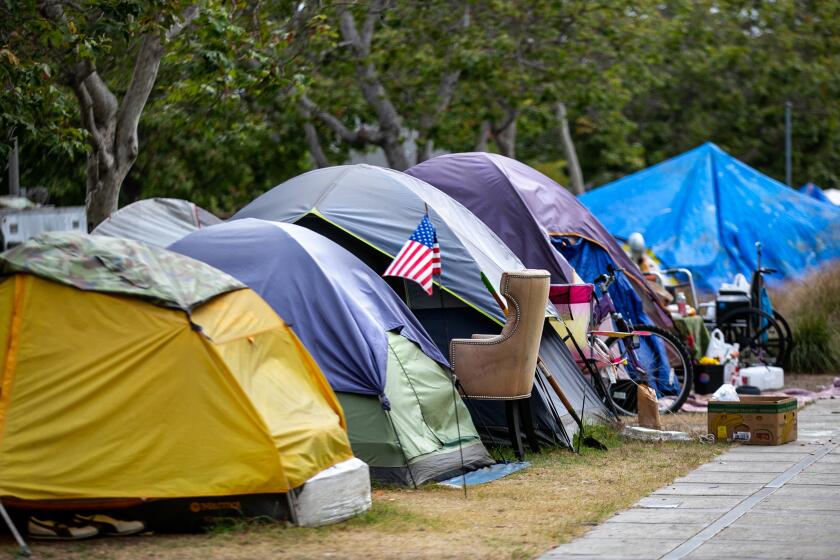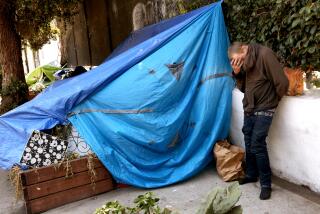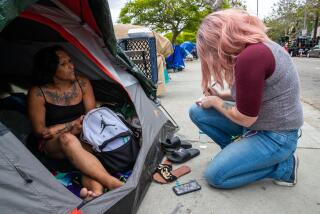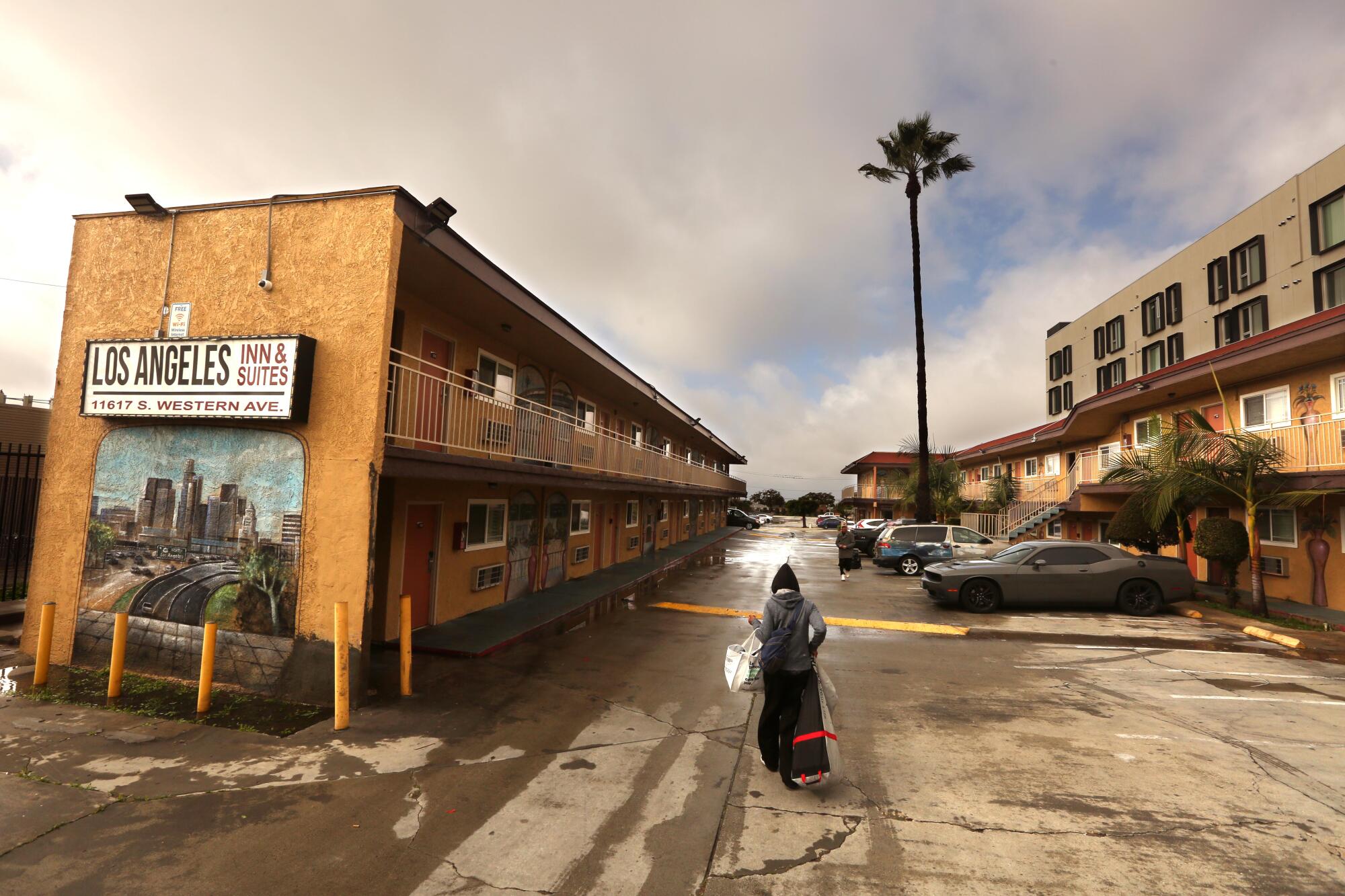
Savanna Moran took about an hour to weigh the offer made by homeless outreach workers: Move into a warm motel room about a dozen miles away — but in exchange, give up her tent on Hampton Drive.
After years of living on the streets, the 30-year-old was ready to make a change. Heavy rain was on the way, and she didn’t want to be out in it.
When the time came, Moran and her boyfriend held on to their phones, headphones, bicycles, audio speakers and some of their clothes. They recorded a video for the city agreeing to let sanitation crews toss everything else, including the tent.
“We kept what we wanted,” she said, “and they took the rest.”
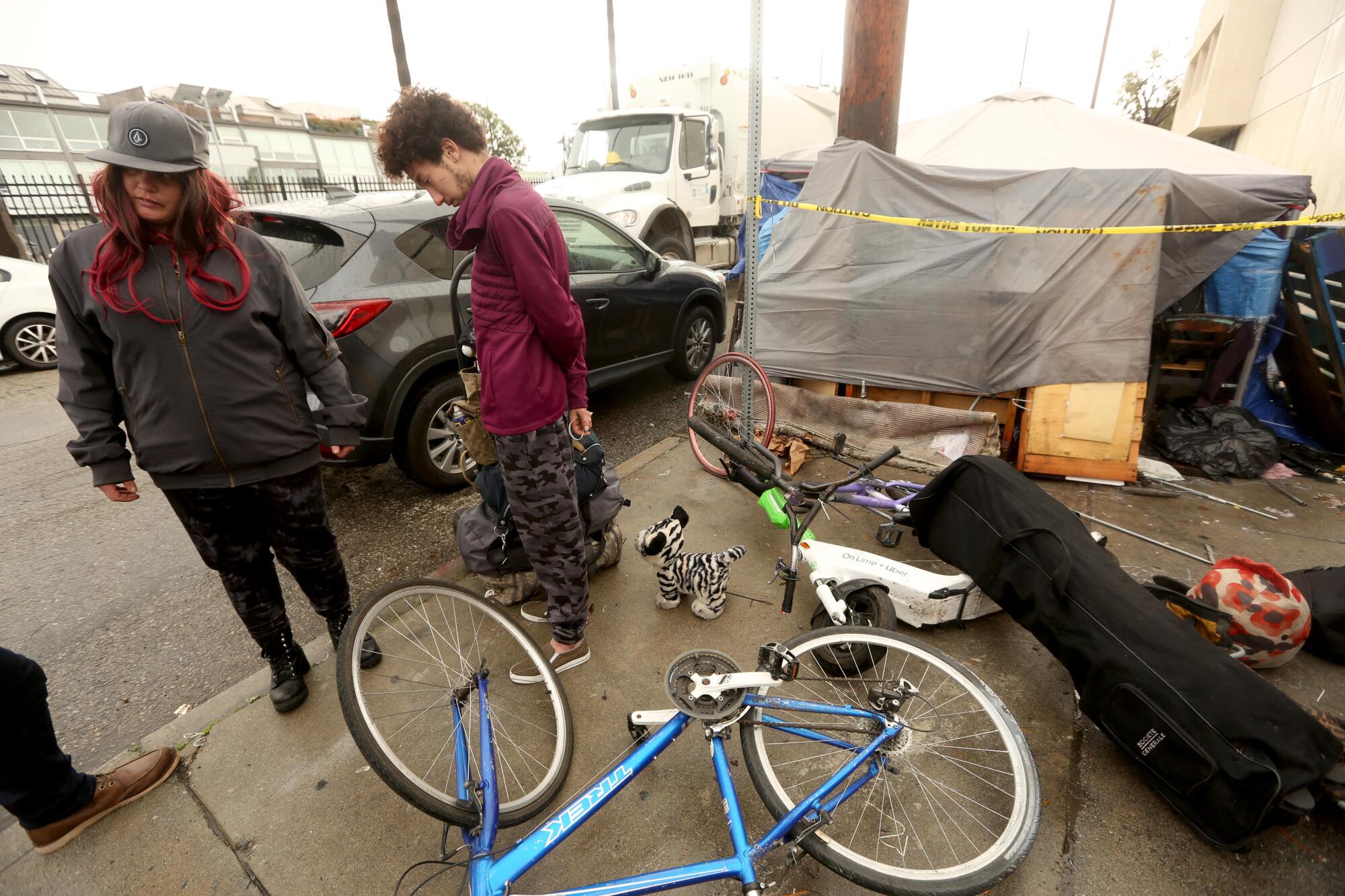
That exchange was one of many that played out over the last week in L.A.’s Venice neighborhood as part of Inside Safe, an initiative from Mayor Karen Bass aimed at bringing the city’s unhoused residents under a roof. Bass wants the program to be more proactive than the city’s previous responses to homelessness, replacing “quick fixes with lasting solutions.”
Bass, who has made homelessness her No. 1 issue for the foreseeable future, took Inside Safe for a trial run last month, sending a team of government workers to move 31 people on or near Cahuenga Boulevard in Hollywood into motel rooms.
Now, she has trained her sights on a massive encampment in Venice that, as recently as last week, extended across four different streets and was home to an estimated 98 people.
In an interview, Bass said she picked the Venice encampment because it has been a source of not only great human suffering, but also anger in the surrounding neighborhood. After a year of campaigning, she concluded that Angelenos will not view her initiative as a success until their communities are free of encampments.
“They want the tents to go,” she said. “I could build half a million units of housing and if there are still tents, people will not believe that you did anything except to steal their money.”
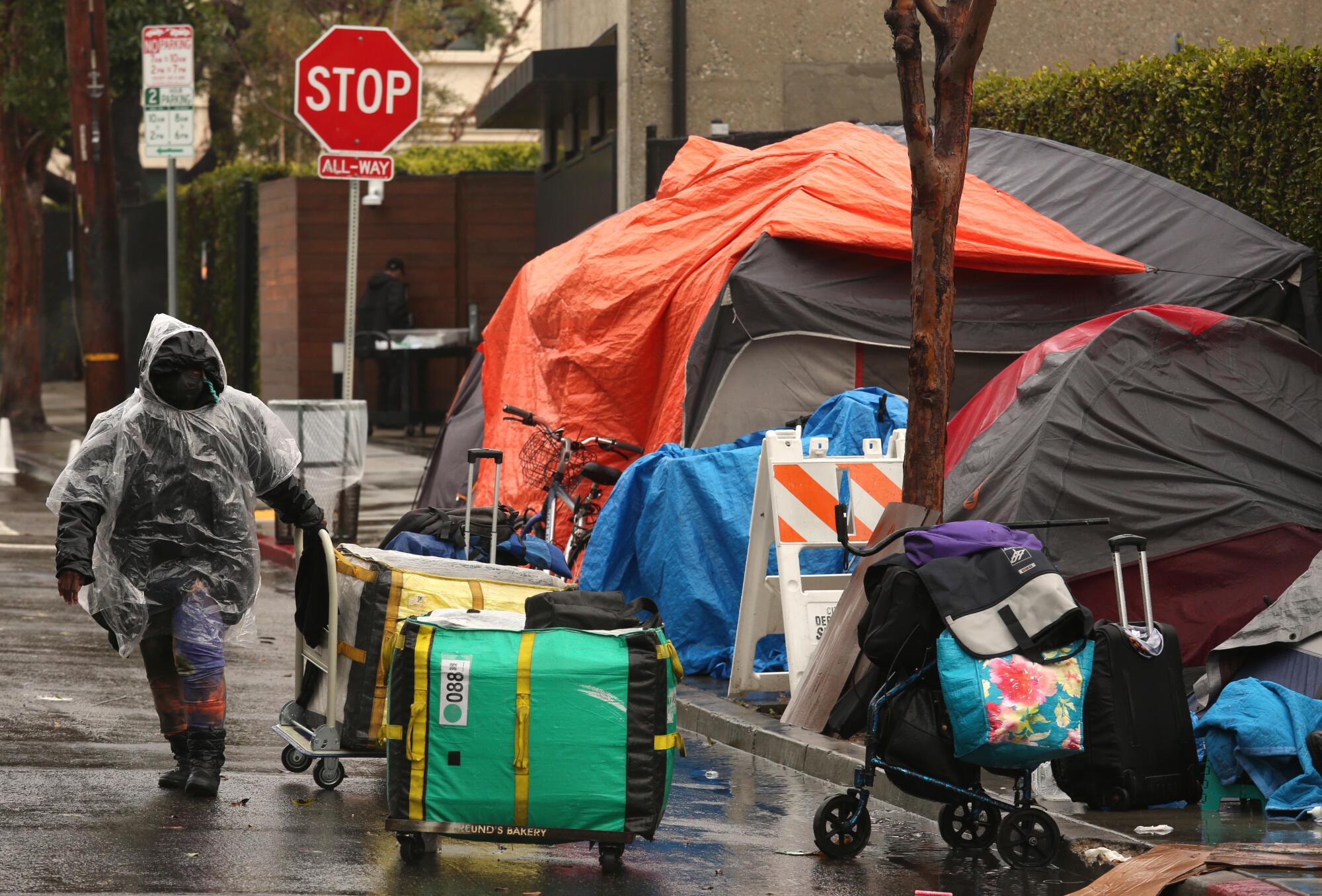
The encampment in Venice has a history. It first appeared more than a decade ago, with recreational vehicles, campers and tents populating a one-block stretch of 3rd Avenue, according to Mark Ryavec, president of the Venice Stakeholders Assn.
By 2019, the encampment had expanded to nearby Hampton Drive, which runs parallel to 3rd. It grew more the following year, after then-Mayor Eric Garcetti and then-Councilmember Mike Bonin opened a homeless shelter on nearby Main Street, local residents said.
Andromeda, Erica and Heidi have gotten by for years on the street. Sometimes government helps them, but at other times it makes their lives harder.
The completion of that shelter coincided with the outbreak of COVID-19. Once the pandemic shutdowns began, city agencies avoided major disruptions to the nearby encampment to avoid spreading the virus.
Since then, the encampment has become a symbol of the city’s “failure to keep its promises,” said Councilmember Traci Park, who replaced Bonin last month as the neighborhood’s representative.
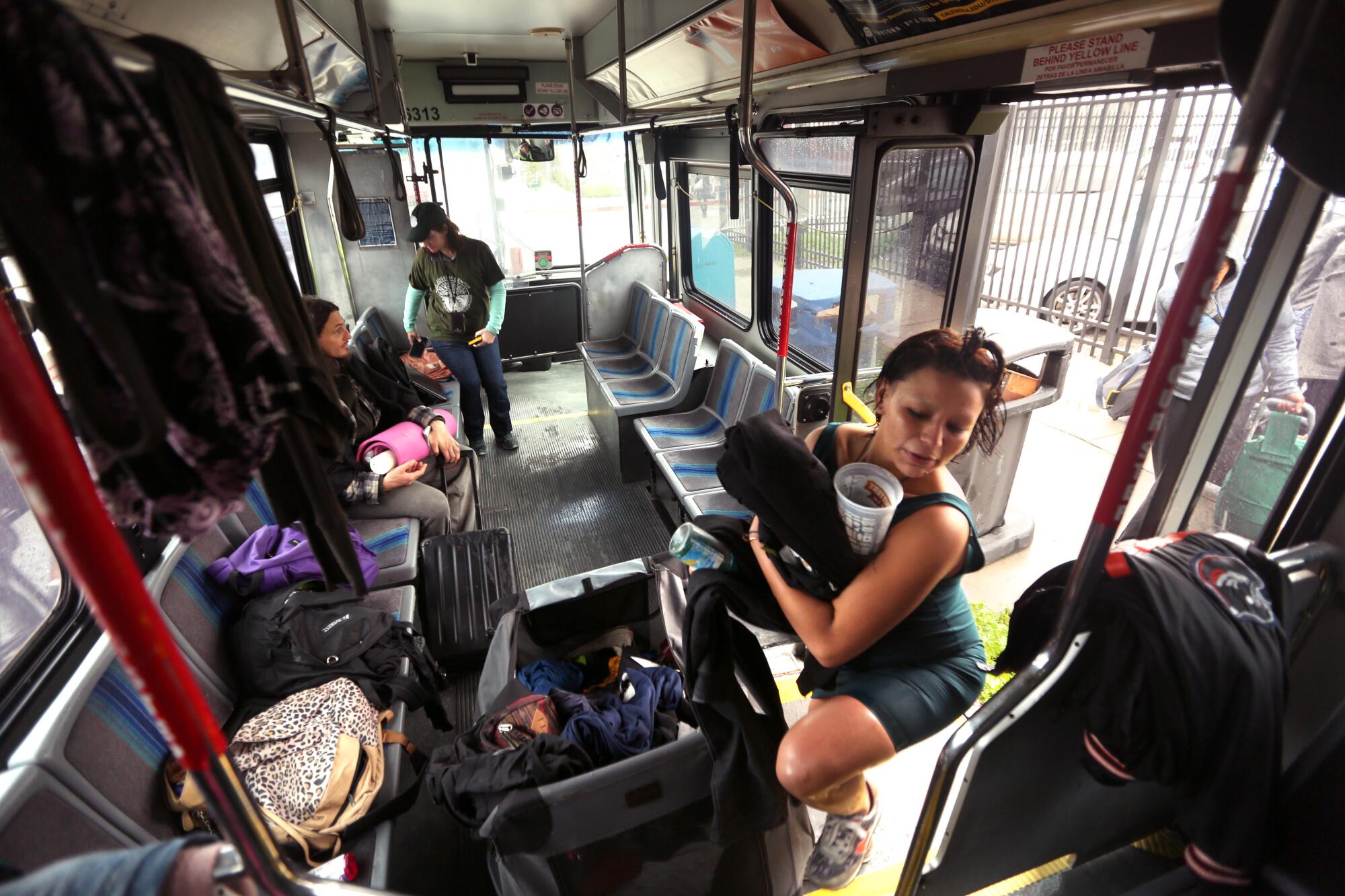
When the homeless shelter was first announced, city leaders said the neighborhood would receive increased trash removal and stepped-up police patrols, Park said. Permanent signs were installed warning that tents on local streets would need to be dismantled during daytime hours.
Instead, the tents stayed up and encampment grew. Park, on the campaign trail, vowed to move swiftly once in office. Last month, she recommended the location to the mayor for the Inside Safe initiative, saying it would help rebuild trust between the city and the neighborhood.
“I was very pleased and encouraged that she understood the significance of this location,” Park said.
Bass and Park toured the area together last week, informing encampment residents there would be new offers of temporary housing, and a pathway to permanent housing. City crews stretched yellow police tape across Sunset Avenue and began the work of offering shelter and removing trash.
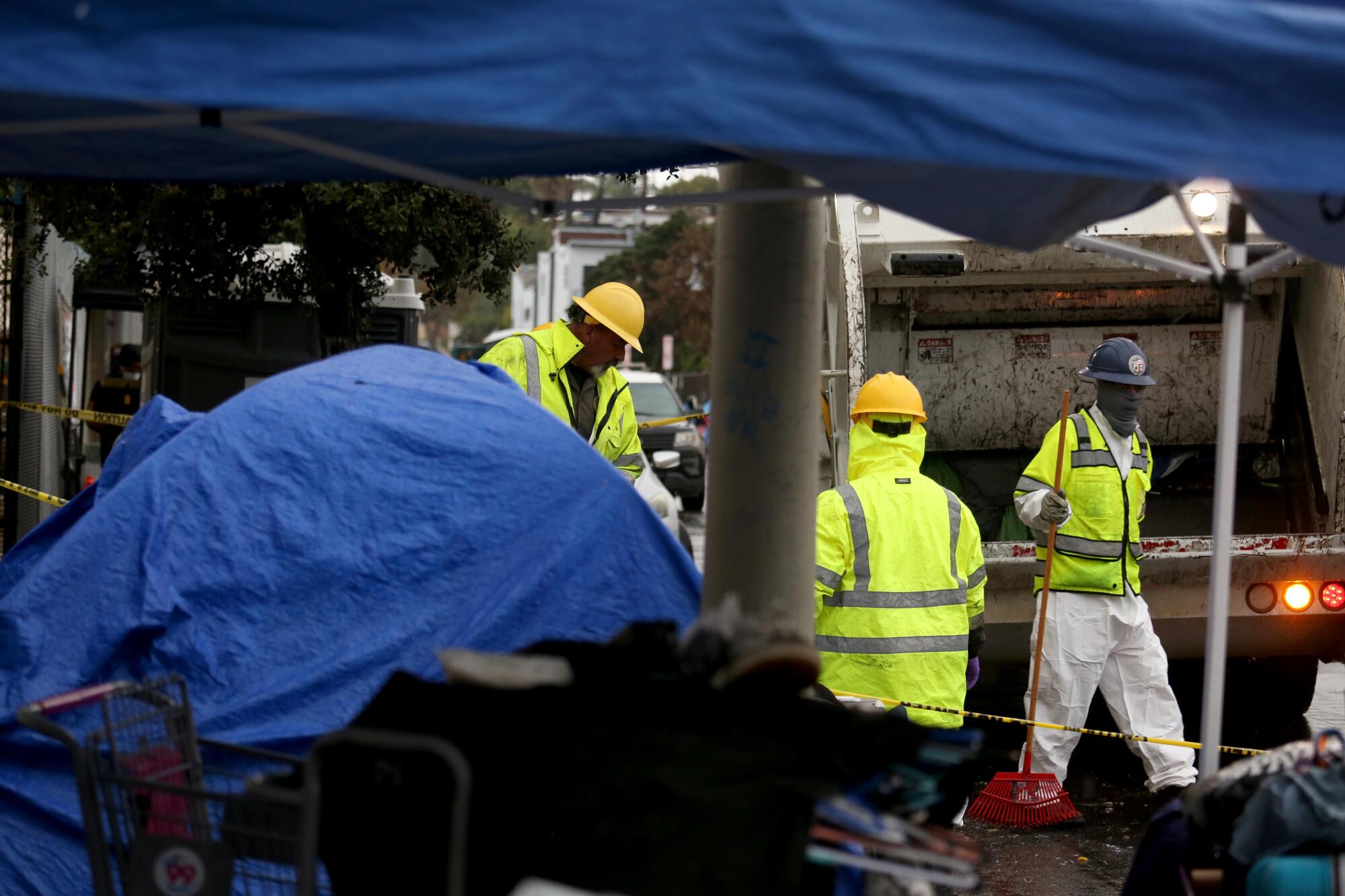
Some agreed to relocate to the Los Angeles Inn & Suites, an assortment of two-story buildings near the 105 Freeway in South Los Angeles. Others took rooms in a motel closer to Venice.
Each of those offers was voluntary, according to organizers of the Inside Safe operation. But there were restrictions. Those who accepted temporary housing either placed their tent in storage or let sanitation workers throw it away.
“What we don’t want them to do is keep that tent on the street,” said Va Lecia Adams Kellum, president and chief executive of St. Joseph Center, which is providing homeless outreach, substance abuse counseling and other social services as part of the Venice operation.
Adams Kellum said her organization adopted that approach after hearing from formerly homeless people who said relinquishing a tent, or at least putting it in storage, can be a symbolic step — one that marks a different path.
For some, it wasn’t a difficult trade-off. For others, the offer triggered protracted talks, with outreach workers seeking ways to address the needs of encampment residents.
One woman accepted a motel room after receiving assurances that she could take all eight of her dogs with her. Another made the move once his tent was strapped onto an oversized cart — upright and still standing — and wheeled over to a nearby Public Storage facility for safekeeping.
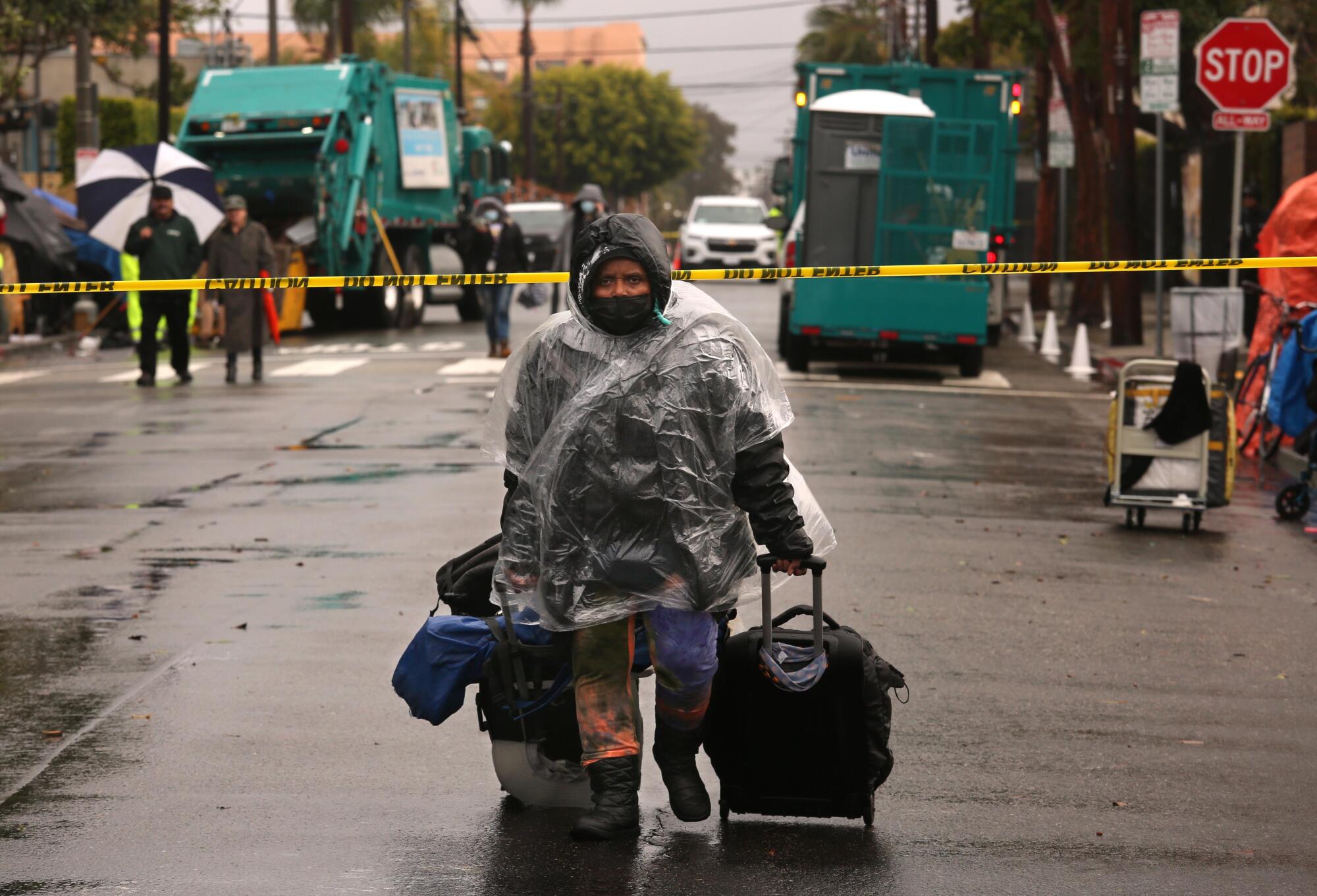
Still, one activist, who spent several days monitoring the Venice operation, questioned whether the city’s offers were truly voluntary.
Peggy Lee Kennedy, an organizer with the Venice Justice Committee, said encampment residents have been surrounded in recent days by social workers, police officers, trash trucks and traffic officers — all on streets cordoned off by police tape.
“It feels high pressure,” Kennedy said. “If somebody comes to your tent over and over and over again, there’s pressure going on there.”
Either way, heavy winter rains have helped outreach workers make their case. Many encampment residents were left with soaked mattresses, bedding and other items in recent days.
“All our clothes are wet,” said Iyana Woods, shortly before boarding a DASH bus that took her to the Los Angeles Inn & Suites. She then gestured to 53-year-old Robert Lyons: “He woke up soaking wet.”
Lyons said he and Woods came to Los Angeles from Ohio seven months ago. Since then, he has experienced medical challenges, including hernia surgery and a bout of COVID-19.
“It’s been a struggle trying to survive,” Lyons said. “It’s basically just me and her.”
Los Angeles County supervisors declared a state of emergency over the homeless crisis, a move aimed at speeding up service delivery to the tens of thousands of people suffering outside.
Once they accepted the city’s offer, encampment residents lugged skateboards, guitars, bags of clothing, rolling suitcases, dog food and other possessions onto the idling DASH bus. David Flanagan, 22, rolled up with a shopping cart filled with assorted mini-bike parts, including an engine.
Katharine Murphy, a substance abuse counselor with St. Joseph, stopped him at the door. “You can’t bring this on,” she said, pointing to the cart.
Flanagan loaded the motorcycle parts onto the bus and left the cart behind.
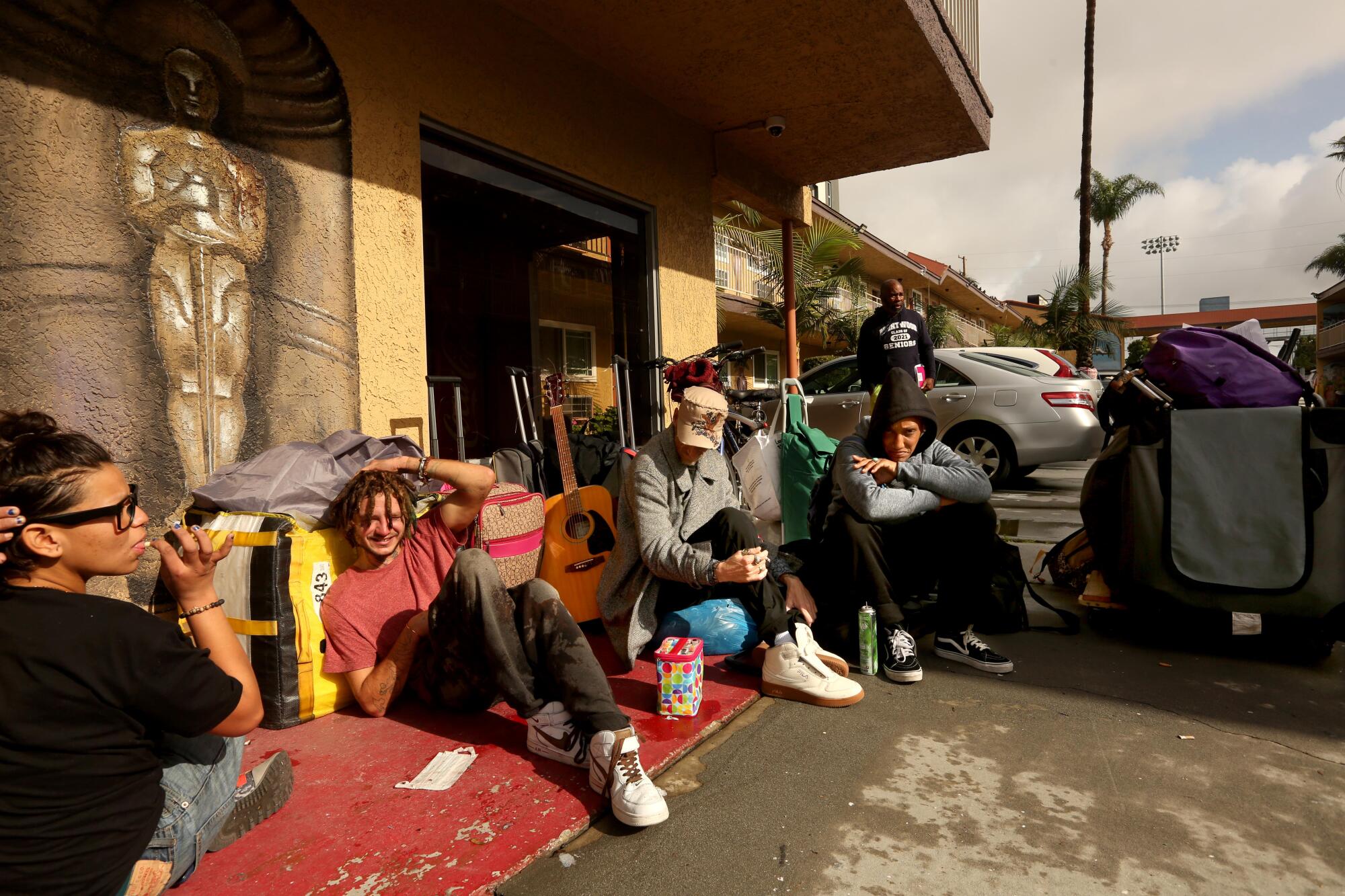
By Monday evening, organizers of the Inside Safe operation had relocated 82 people, with all but two of them moving into motels. By midday Tuesday, only nine tent structures remained on 3rd, with a 10th on Hampton.
With the Venice operation now in its second week, housed residents in the area have showered Bass and Park with praise. Venice resident Connie Brooks, who has been contacting City Hall about the encampment since 2019, said she feels a “tremendous weight” has been lifted.
Over the years, Brooks had informed city officials about unhoused residents who experienced mental health crises or were assaulted by others on the street. The inability to help was “extremely traumatic and painful,” she said.
“We have seen people deteriorating on our sidewalks for three years, and it was very, very difficult to get them help,” Brooks said.
Encampment residents who accepted temporary housing will be assigned case management workers to assist them with the process of finding an apartment using government financial assistance. If applicable, they will also receive referrals for substance abuse treatment.
Staffers with St. Joseph believe substance abuse rates at the Venice encampment are “noticeably higher” than they are among the city’s overall homeless population. Precise numbers won’t be known for several weeks.
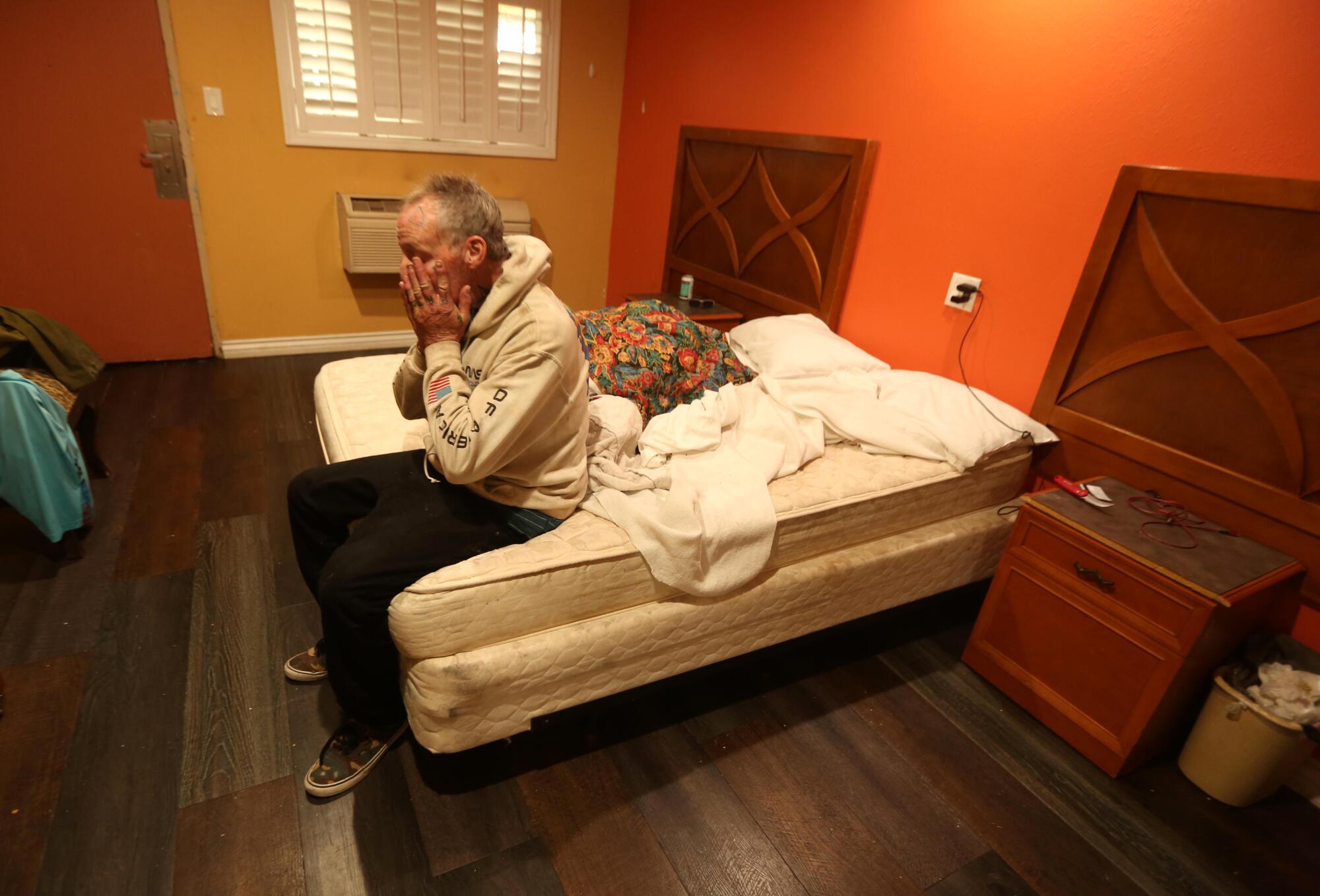
Bass, for her part, said she is looking to transform the Inside Safe initiative over the coming months, moving it from a series of one-off encampment operations into a permanent system for getting people off sidewalks and into housing. When that system is fully up and running, city and county agencies would be capable of operating in multiple neighborhoods at once, she said.
Bass said she’s also determined to keep encampments from reappearing and will conduct “relentless outreach” if residents come back or new arrivals take root.
“We see that we’re going to be connected to the neighborhoods for a long time,” she said.
One Venice encampment resident, who declined to give her name, is already staying connected to the neighborhood, choosing to move not into a motel but a city homeless shelter a block away. On Sunday night, her tent was the last one standing on the east side of Hampton Drive.
That night, the 39-year-old loaded art supplies and a wood-framed mirror/vanity onto a janitorial cart. She said she was keeping those items, but ready to relinquish the tent.
“We tend to cling to what we have, even if it’s nothing, because it’s all we have,” she said.
The next day, her tent was gone.
More to Read
Sign up for Essential California
The most important California stories and recommendations in your inbox every morning.
You may occasionally receive promotional content from the Los Angeles Times.
